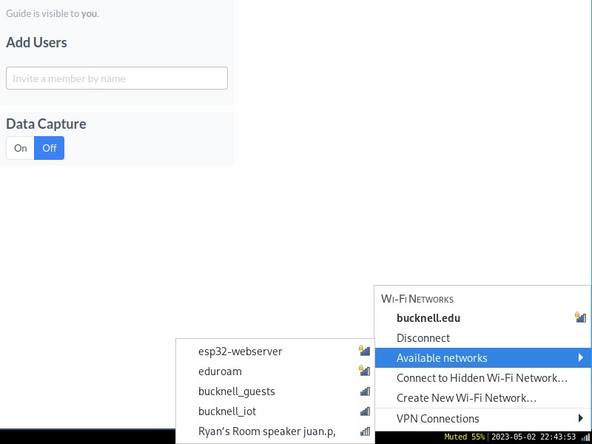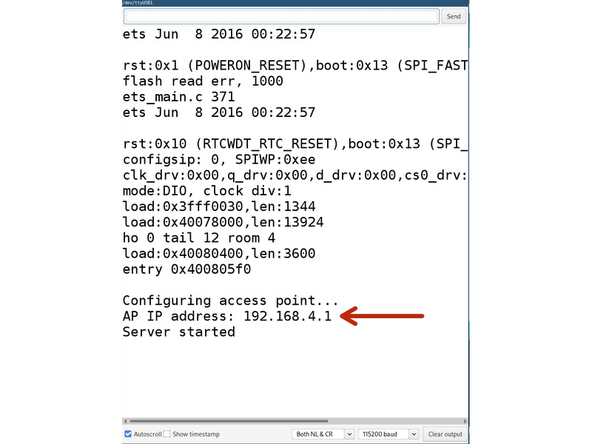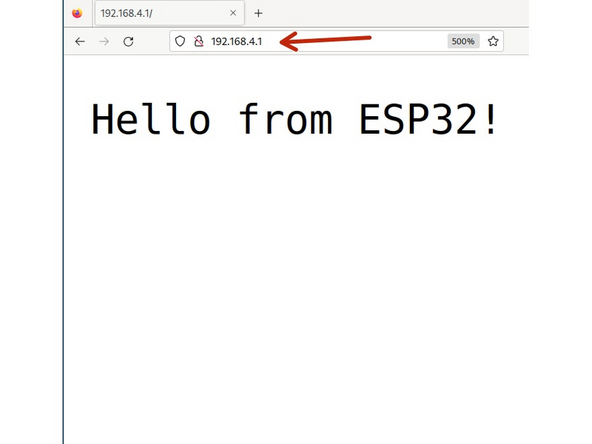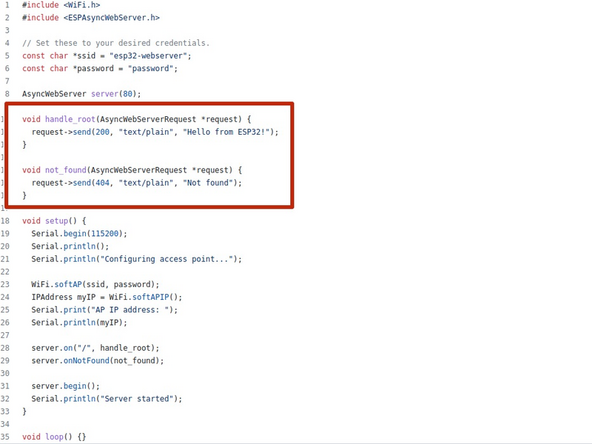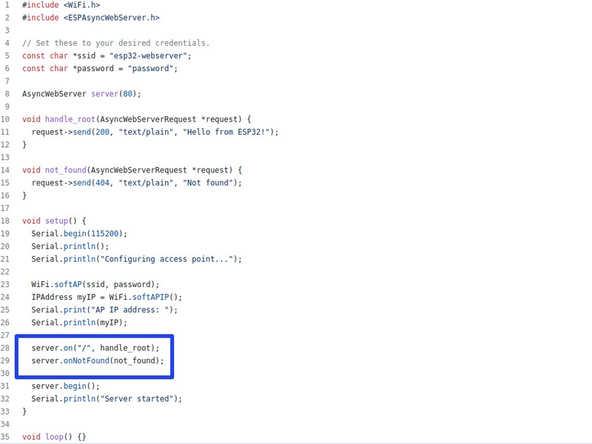Introduction
The ESP32 is a WiFi enabled micro-controller capable of serving HTTP webpages or hosting a REST API.
-
-
Follow the steps here to install the Arduino IDE and configure it for the ESP-32
-
Even if you already have the Arduino IDE installed you need to make sure the ESP-32 is added in the boards manager
-
-
-
There is a synchronous web server also available for the ESP32 which is very similar in usage. I would recommend using the Asynchronous webserver because it allows multiple connections simmultaneously.
-
Download the latest version of the ESP32 Async Web Server library from here.
-
Install the library from the menu. Sketch > Include Library > Add .ZIP library
-
The Web Server library also depends on the AsyncTCP library. Download it here and install it the same way.
-
-
-
Download the template from Github here.
-
Upload the code to the ESP32 and connect over the Serial Monitor to get the IP address.
-
Connect to the ESP32's WiFi network and go to the IP address. You should be greeted with a welcome message.
-
-
-
The library use callback functions to handle different URLs. In the callback function plain text, json, or an HTML page can be sent as a response.
-
These callback functions are bound to a URL and called each time something navigates to the URL.
-
To read more about the library and see more examples you can look at the GitHub page for the library here.
-



